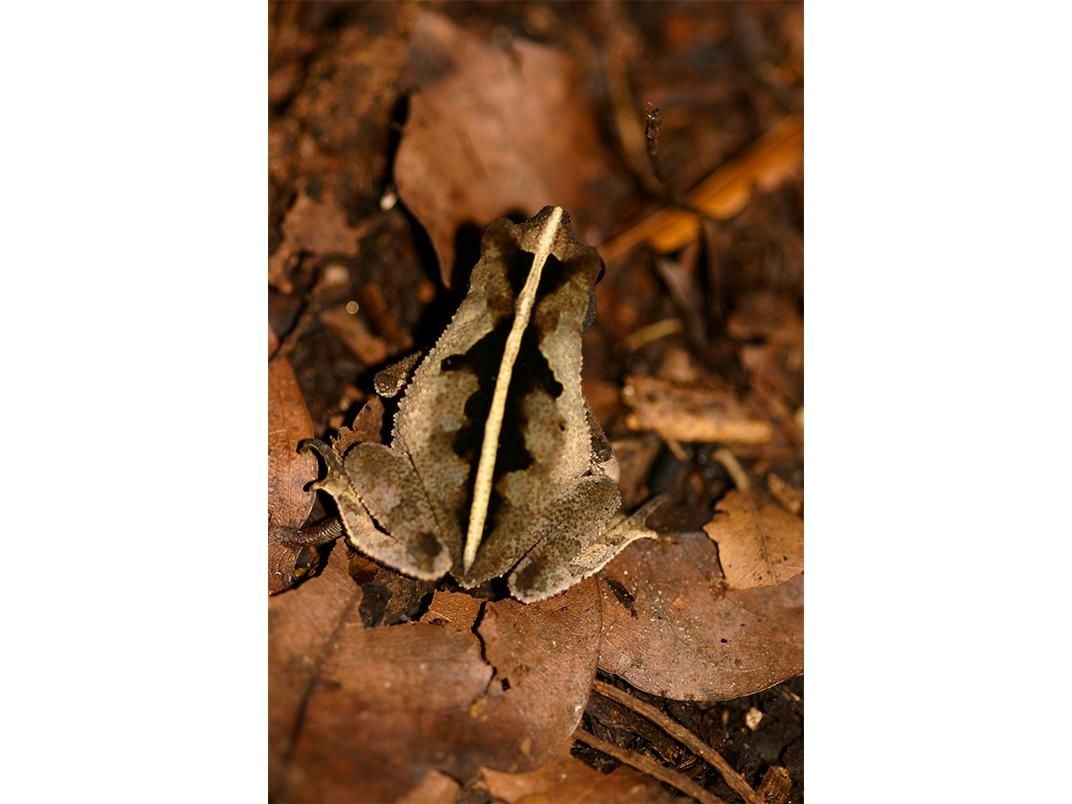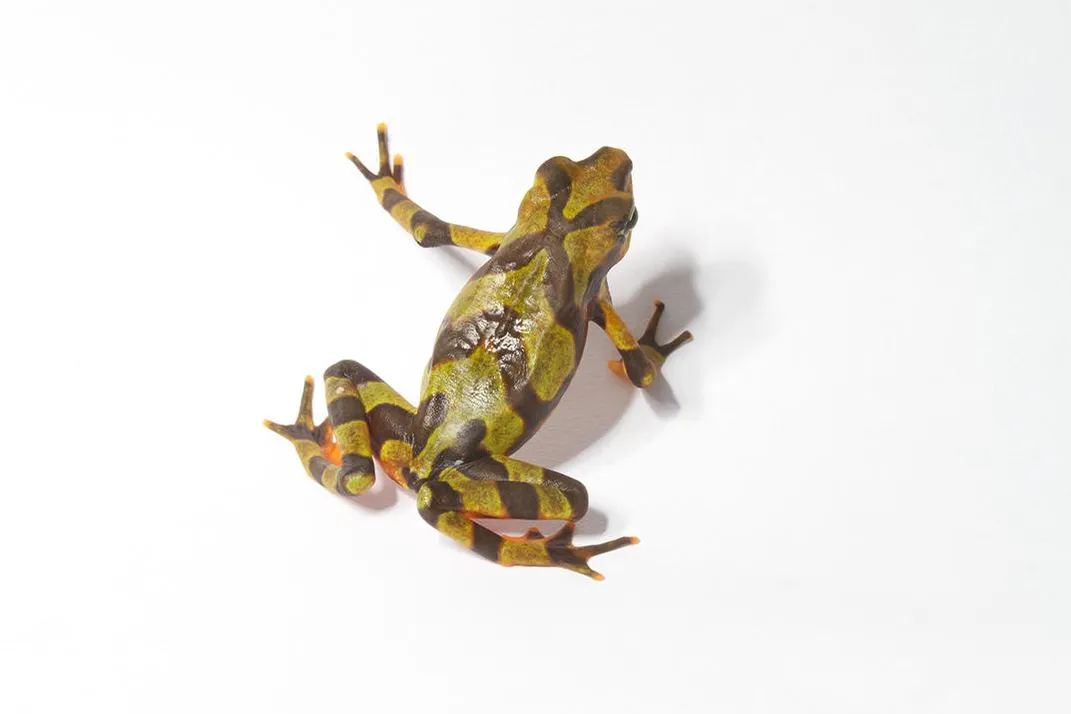Here’s Why You Should Never Kiss a Toad
A scientist at Smithsonian’s Tropical Research Institute helped catalog everything known about toxins in the skins of endangered frogs and toads
An old myth says that touching a toad will give you warts. This isn't true, but many species of toads and frogs in the family bufonidae do produce unique chemicals that can poison or even kill an animal or human foolish enough to try to eat one.
These chemicals, called bufotoxins, probably evolved to deter predators but they may offer a variety of other uses, including as medicine. Bufo gargarizans, an Asian species of toad, produces a substance that could even prove useful in the treatment of certain cancers. According to one 2011 study, the toad produces a substance that effects "significant antitumor activity, including inhibition of cell proliferation, induction of cell differentiation, induction of apoptosis, disruption of the cell cycle, inhibition of cancer angiogenesis, reversal of multi-drug resistance, and regulation of the immune response."
Other bufotoxins have been used to treat diseases among horses and cattle. Bufotoxins have been individually studied in the past but there was no single compendium of research on them. Roberto Ibáñez, a staff scientist at the Smithsonian Tropical Research Institute, has co-authored a paper in the Journal of Ethnopharmacology that brings together everything currently known to science about bufotoxins. He helped to identify 47 species of frogs and toads which are used in traditional medicines and then narrowed in on the 15 species that are members of the bufonidae family.
“Our claim is that there are many compounds in the toads that are worth researching for humans. There are potentially many new drugs for humans and other species,” Ibáñez says. “Many of those local species are in rapid decline, mainly because of the fungus that is killing them.”
That fungus, Batrachochytrium dendrobatidis, commonly referred to as “amphibian chytrid fungus,” has spread across the globe during the past 40 years causing massive population declines and even extinctions among many species of amphibians. Amphibian chytrid fungus infects the skins of amphibians and causes them to stop feeding, move slowly and eventually die.
One affected bufonidae species is the Panamanian golden frog, which has been completely wiped out in the wild by the fungus. The Panamanian golden frog exists only in captivity now.
In his role as the in-country director of the Panama Amphibian Rescue and Conservation Project, Ibáñez has been immersed in breeding, rescuing and researching the critically endangered Panamanian golden frog. But he fears that if the frogs only exist in captivity, there will be no way for scientists to preserve their bufotoxins.
“There are some indications that some of the [Panamanian frogs] only produce toxins in the wild,” Ibáñez says. “But we don't know if without the right diet they don't produce the right toxins or any toxins at all. . . It could be from bacteria in their skin, but we don't know.”
The skin of the Panamanian golden frog produces unique chemicals called zetekitoxins.
"Remarkably, toxins from a single [Panamanian golden] frog skin can kill 130 to 1,000 mice," says Candelario Rodriguez, another author of the review. "The mechanism of action is to reduce cardiac rhythm, making these interesting candidates as therapeutic compounds. . . if golden frogs were to disappear, they would take this potentially valuable chemical with them.”
While Ibáñez and other scientists can create a sort of lifeboat for an endangered species of amphibian many of the medically promising bufotoxins might only be available if chytridiomycosis can be defeated and the animals can be restored to the wild.
Meanwhile, the Panama Amphibian Rescue and Conservation Project is using their captive populations of frogs to research a probiotic cure for the fungus that will allow the animals to be safely released.
“The main message is just to show that there are a lot of species and many of them are disappearing and have compounds that can be used by humans for their own benefit,” Ibáñez says. “We should preserve these species in the wild.”
/https://tf-cmsv2-smithsonianmag-media.s3.amazonaws.com/accounts/headshot/JacksonLanders.jpg)
/https://tf-cmsv2-smithsonianmag-media.s3.amazonaws.com/filer/78/d7/78d7cb3d-9201-4855-b411-28805161521f/7154404274dce580ea18kweb.jpg)


/https://tf-cmsv2-smithsonianmag-media.s3.amazonaws.com/filer/2d/41/2d415041-fbad-4f3b-9a39-005ba59dc698/50096221395473263f54oweb.jpg)
/https://tf-cmsv2-smithsonianmag-media.s3.amazonaws.com/accounts/headshot/JacksonLanders.jpg)